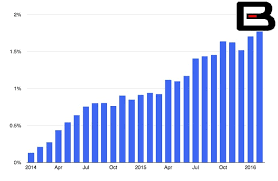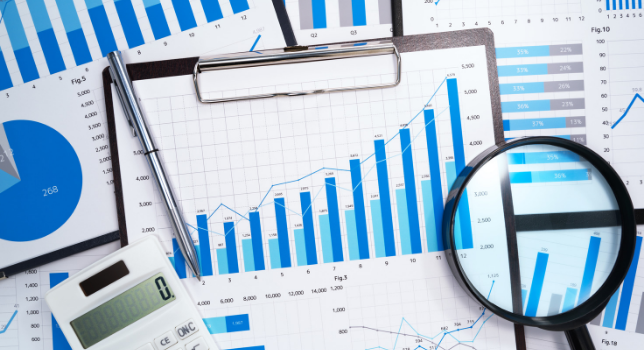Source: analyticsinsight.net
Simply put, Artificial Intelligence (AI) is the level of intelligence exhibited by machines, in comparison to natural intelligence exhibited by human beings and animals. Therefore it is sometimes referred to as Machine Intelligence. When taught, a machine can effectively perceive its environment and take certain actions to better its chances of achieving set goals successfully. How can a machine be taught?
The root of Machine learning involves writing codes or commands using a programming language that the machine understands. These codes help lay out the foundation of the machines’ thinking faculty, such that the machine is programmed to perform certain functions defined in the codes. These machines are also programmed to use their basic codes to generate a continuous sequence of related codes in order to increase their thinking, learning, and problem-solving capabilities when the workload is increased.
Just as cranes are machines designed to lift heavy loads which humans cannot lift, some machines are programmed to think further and solve analytical problems which are cumbersome to the human brain and some software. This machine assistance for thinking and analysis dates way back to the times of the Abacus. Technology has advanced to the point where there is literally no limit to the amount of information/ data that a machine can work with. This brings us to the topic of Big Data.
Big Data, just as the phrase implies, is simply huge or large or broad or complex or a high amount of a specific set of information which can be understood by, and stored in a computer/ machine. Professionally, Big Data is a field that studies various means of extracting, analysing, or dealing with sets of data that are so complex to be handled by traditional data-processing systems. Such an amount of data requires a system designed to stretch its extraction and analysis capability.
The ideal and most effective means of handling Big Data is with AI Our world is already steeped in Big Data. There is a massive amount of data online and offline about any topic you can think of, ranging from people, their routine, their preferences, etc to non-living things, their properties, their uses, etc.
This huge stockpile of data, when properly harnessed, can give valuable insights and business analytics to the sector/ industry where the data set belongs. Thus, artificially intelligent algorithms are written for us to benefit from large and complex data.
How Companies Are Applying Artificial Intelligence and Big Data
We have addressed the meaning of these terminologies, we will dedicate this part of our Artificial Intelligence essay reviewing how applications are benefiting from the synergy between AI algorithm and Big Data analytics, such as:
● Natural language processing, where millions of samples from the human language are recorded and linked to their corresponding computer programming language translations. Thus, computers are programmed and used in helping organizations analyze and process huge amounts of human language data.
● Helping agricultural organisations and corporations broaden their monitoring capability. AI helps farmers to count and monitor their produce through every growth stage till maturity. AI can identify weak points or defects long before they spread to other areas of these huge acres of land. In this case, satellite systems or drones are used by the AI for viewing and extracting the data.
● Banking and securities, for monitoring financial market activities. For instance, the Securities Exchange Commission (SEC) is using network analytics and natural language processing to foil illegal trading activities in financial markets. Trading data analytics are obtained for high-frequency trading, making decision-based trading, risk analysis, and predictive analysis. They are also used for early fraud warning, card fraud detection, archival and analysis of audit trails, reporting enterprise credit, customer data transformation, etc.
● Communication, Media and Entertainment. AI capabilities can be used for collecting, analyzing, and utilizing consumer insights. Leveraging mobile and social media content. Understanding patterns of real-time, media content usage. Companies in this industry can simultaneously analyse their customer data along with customer behavioural data to create detailed customer profiles that will be used for creating content for a diverse target audience, recommending content, and measuring content performance.
● Healthcare providers have benefited from the large pool of health data Prescriptions and health analysis have been simplified by AI. Hospitals are using data collected by millions of cell phones and sensors, allowing doctors to use evidence-based medicine. Also, the spread of chronic diseases is identified and tracked faster.
● In the Educational sector, AI syncs with Big Data analytics for various purposes, such as for tracking and analysing when a student logs into the school’s system, the amount of time spent on the different pages of the system, and the overall progress of students over time. It is also useful for measuring the effectiveness of teachers. Thus, teachers’ performance is analysed and measured with respect to the number of students, various courses, student aspirations, student demographics, behavioural patterns, and many other data.
● In Manufacturing, inventory management, production management, supply chain analysis and customer satisfaction techniques are made seamless. Thus, the quality of products is improved, energy efficiency is ensured, reliability levels rise, and profit margins increase.
● In the Natural Resources sector, the synergy of AI and Big Data makes predictive modelling possible. Allowing for the quick and easy analysis of large graphical data, geospatial data, temporal data, seismic interpretation and reservoir characterization.
● Governments around the world use AI for various applications such as public facial recognition, vehicle recognition for traffic management, population demographics, financial classifications, energy exploration, environmental conservation, infrastructure management, criminal investigations, and much more.
Other areas where AI is used in Big Data are Insurance, Retail & Wholesale Trade, Transportation, and Energy & Utilities.
Final Thoughts
In conclusion, we have been able to confirm that there are huge investments in the use of AI in Big Data analysis for the benefit of all. Data sets will continue to increase, therefore the level of application and investment will continue to increase over time. Human intervention, as always, will continue to be relevant, although this relevance is projected to continue reducing with time.
One can rightly argue that “Artificial Intelligence is useless without data and data is insurmountable without AI ”. Also, both AI and Big Data are literally impossible without human intervention and interaction.
AI system which enables Machine learning solutions is the future of the development of business technologies and processes. Such enabled Machine Learning applications automate data analysis and find new insights that were previously impossible to imagine by processing data manually or with traditional methods. This possibility of increasing the predictability of certain events allows us to completely redraw our approach to how everything is done.

